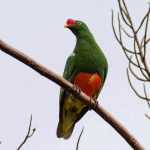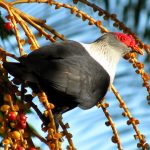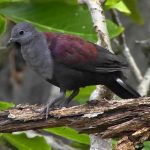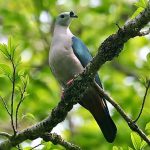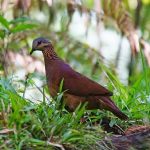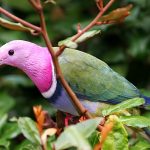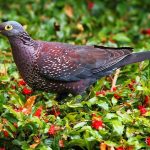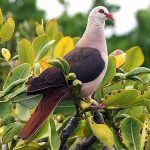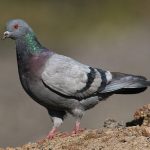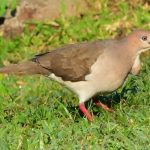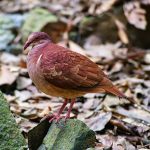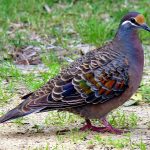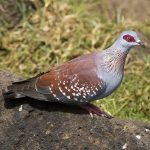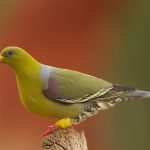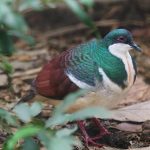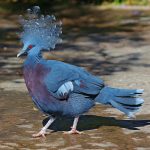Grey-headed quail-dove

 |
| (Photo from Bird Forum) |
Common name:
grey-headed quail-dove (en); juriti-de-cabeça-cinzenta (pt); colombe de Gundlach (fr); camao (es); Gundlachtaube (de)
Taxonomy:
Order Columbiformes
Family Columbidae
Range:
This species is found in Cuba and the Dominican Republic. In Cuba it may still occur in patches throughout the country, but mainly on the Zapata Peninsula and Sierra del Rosario. In the Dominican Republic they occur on the Cordillera Central, Sierra de Baoruco and Sierra de Neiba. It possibly also occurred in Haiti until the early 20th century, but was extirpated by extensive habitat destruction.
Size:
These birds are 26-30 cm long and weigh 210 g.
Habitat:
The grey-headed quail-dove is mostly found in dry, limestone-based forests, but also uses rainforests, swamp forests and coffee plantations. They are present from sea level up to an altitude of 1.800 m.
Diet:
They forage on the ground, taking seeds and some small invertebrates.
Breeding:
These birds are monogamous and may pair for life. They breed in January-August, nesting in a loose bowl made of leaves, placed on the ground among the forest undergrowth. There the female lays 1-2 beige-coloured eggs which are incubated for about 13 days. The chicks fledge about 2 weeks after hatching.
Conservation:
IUCN status – VU (Vulnerable)
This species has a relatively large but patchy breeding range. The global population is estimated at 1.500-7.000 individuals and is suspected to be declining rapidly, owing to habitat loss and hunting pressure. Habitat destruction as nearly wiped out this species on the Cordillera Central and Sierra de Neiba, mainly through the expansion of cacao, coffee and tobacco production. Further threats include dry-season burning, drainage, agricultural expansion and introduced predators, as well as heavy hunting in Cuba for human consumption. Conservation action include a hunting ban in the Dominican republic since the 1970s and a number of nature reserves in both Cuba and the Dominican Republic, although few are afforded strict protection.
